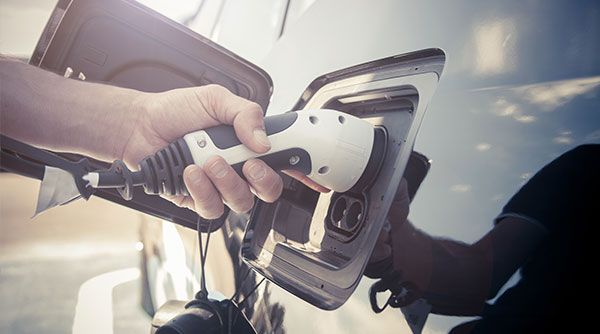A total of 239,297 new passenger cars were registered in Germany in May, 136,256 of which had alternative drive systems (purely electric, hybrids with and without plugs and gas-powered). This is 33.6 percent more than in the same month last year. The international vehicle manufacturers’ market share of alternative drive systems was 42.6% in May 2025. The share of new registrations with alternative drive systems in the overall market rose to 56.9% in May, compared to 43.2% in May 2024.
“Despite the growth rates for electric vehicles and plug-in hybrids, we are currently not meeting the European Commission’s CO2 targets in Germany. This will require between 20 and 25 percent e-registrations. To make the switch to electromobility attractive and plannable across the board, we need an overarching and long-term industry transformation plan from the automotive industry, politicians, the energy industry and local authorities that sets out measures for incentives that protect residual value, a comprehensive charging infrastructure and affordable electricity,” says Imelda Labbé.
New registrations of purely battery-electric passenger cars (BEV) once again saw a significant increase of 44.9% to 43,060 units in May. The BEV share of total new passenger car registrations reached 18.0%. International manufacturers were able to increase BEV registrations by 39.7% to 16,756 vehicles. This puts the share of international manufacturers in the BEV market at 38.9%.
Hybrid vehicles without plugs recorded an increase of 16.7% in May. 66,990 new registrations correspond to a 28.0% share of passenger car registrations (May 2024: 24.3%). The international vehicle manufacturers’ market share of hybrids was 45.3% in May 2025.
New registrations of vehicles with plug-in hybrid drive (PHEV) also recorded an increase in May. 25,181 PHEVs rolled onto the roads, 79.4% more than in the same month last year. The share of all new passenger car registrations rose to 10.5 percent. The international vehicle manufacturers’ market share of plug-in hybrids thus rose by 1.6 percentage points to 39.1% in May.
Together, electric vehicles (BEVs, plug-in hybrids and fuel cell vehicles) therefore accounted for a market share of 28.5% in May with 68,251 new registrations. This corresponds to an increase of 56.0 percent compared to May last year.
The VDIK regularly updates the list of electric vehicles of its member companies. The VDIK electric list can be accessed here.
In addition, 1,015 LPG passenger cars (+23.6 percent) rolled onto the roads in May. Since the beginning of the year, new registrations of LPG passenger cars have amounted to 4,900 units (-22.9 percent).
New registrations of combustion passenger cars reached 103,027 units in May, of which 67,921 were petrol (-24.1%) and 35,106 diesel (-21.8%). Petrol cars accounted for 28.4 percent of new car registrations, while diesel cars accounted for 14.7 percent.
| May | January-May | |||||||
|---|---|---|---|---|---|---|---|---|
| +/- (%) |
Share of total car market (%) |
Share of international brands (%) |
+/- (%) |
Share of total car market (%) |
Share of international brands (%) |
|||
| BEV | 43.060 | 44,9 | 18,0 | 38,9 | 201.563 | 43,2 | 17,6 | 38,7 |
| PHEV | 25.181 | 79,4 | 10,5 | 39,1 | 113.297 | 52,8 | 9,9 | 42,7 |
| FCEV | 10 | 0,0 | 0,0 | 100,0 | 24 | -51,0 | 0,0 | 100,0 |
| Electric Vehicles (total) |
68.251 | 56,0 | 28,5 | 39,0 | 314.884 | 46,5 | 27,5 | 40,1 |
| HEV including: |
66.990 | 16,7 | 28,0 | 45,3 | 326.634 | 12,1 | 28,5 | 47,2 |
| full-hybrid | 10.879 | 21,3 | 4,5 | 94,0 | 49.015 | 6,5 | 4,3 | 92,3 |
| mild-hybrid | 56.111 | 15,8 | 23,4 | 35,9 | 277.619 | 13,1 | 24,2 | 39,2 |
| CNG | 0 | -100,0 | 0,0 | 0,0 | 3 | -97,5 | 0,0 | 66,7 |
| LPG | 1.015 | 23,6 | 0,4 | 98,1 | 4.900 | -22,9 | 0,4 | 98,4 |
| Alternative Drivetrains (total) |
136.256 | 33,6 | 56,9 | 42,6 | 646.421 | 26,1 | 56,4 | 44,1 |
| Petrol | 67.921 | -24,1 | 28,4 | 41,5 | 324.418 | -26,1 | 28,3 | 40,9 |
| Diesel | 35.106 | -21,8 | 14,7 | 175.717 | -21,1 | 15,3 | ||
| Passenger car (total) |
239.297 | 1,2 | 42,1 | 1.146.596 | -2,4 | 42,7 | ||
Glossar
Elektrofahrzeuge: BEV, PHEV und FCEV
BEV, Batterieelektrisches Fahrzeug, engl: Battery Electric Vehicle
PHEV, Plug-In-Hybrid, engl: Plug-In Hybrid Electric Vehicle
FCEV, Brennstoffzellenfahrzeug / Wasserstofffahrzeug, engl.: Fuel Cell Electric Vehicle
HEV, Hybride ohne Stecker bzw. nicht aufladbar, engl.: Hybrid Electric Vehicle
CNG, Gasförmiges Erdgas, engl: Compressed Natural Gas
LPG, Flüssiggas bzw. Autogas, engl: Liquified Petroleum Gas
Als Mild-Hybride werden Modelle mit einer maximalen Leistung des E-Motors von 20 KW eingestuft, bei Voll-Hybriden beträgt die maximale Leistung des E-Motors mehr als 20 KW.





